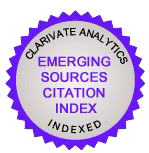Семантика имен в романе Ф.М. Достоевского «Идиот»
Palabras clave:
chronotope, female character, folklorism, universality.Resumen
This article analyses the chronotope and construction of the female character in Dostoevsky’s novel The Idiot. Thework reveals the mythological origins of the knightly theme of the novel in the light of the “Russian idea” defendedby the protagonist. The “new life” starts for him with the apprehension of the national character of the Russianwoman, which mimics the heroines of the Russian epic songs, the bylini. Hermeneutics of the semantics of thefemale names in the novel allows us to understand the nature of this “mimesis”, influenced by the epic tradition.The heroic female character, consolidated in Russian folklore, forms part of the national consciousness and stronglyinfluences the structure of the female character in cult Russian fiction. However, up to now insufficient attention hasbeen paid to its reception in Dostoevsky’s novel. This article shows that the images of women who star in the actionhave a mythological dimension rooted in the image of the “warrior women”, “polianitsi udalie” of the bylini, closelylinked to the domain of sacred knowledge, which helps them to succeed in all their endeavours. It is manifested inthe three Epanchin sisters, as well as in the image of Nastasia Filipovna, syncretized in this latter case by the victimmotif, another traditional female archetype hidden in the semantics of her spoken surname. The connection betweenthe epic-national principle in the nature of the Russian female soul and the archetype of the Beautiful Lady in theWestern chivalric tradition, gives the novel of Dostoevsky its universal character.Descargas
Descargas
Publicado
Cómo citar
Número
Sección
Licencia
Los autores conservan los derechos de autor sobre sus trabajos y garantizan a la revista el derecho de ser la primera publicación del mismo. Los artículos se publican bajo la licencia Creative Commons Atribución-NoComercial 4.0 Internacional (CC BY-NC-SA 4.0), lo que permite a los lectores y otros investigadores copiar, redistribuir, remezclar, transformar y construir a partir del material, siempre que se respeten las condiciones establecidas.












